How to Cook & Serve a Traditional Easter Ham
Want to put together a fabulous Easter ham dinner menu? We’ll teach you how to bake a ham, carve it, and build a traditional menu around it.
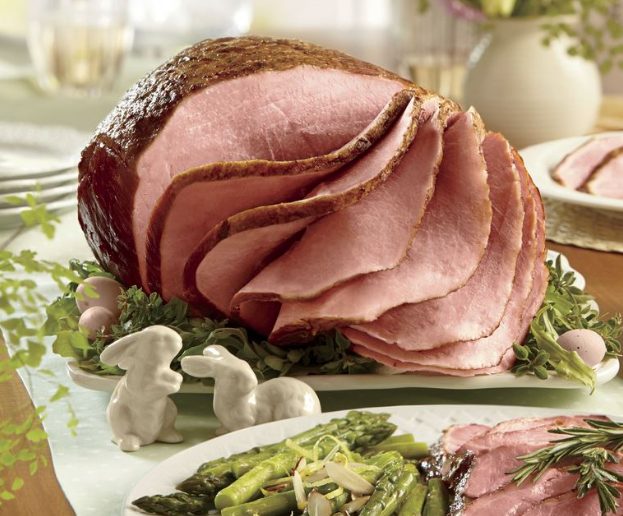
Easter dinner is a great opportunity to gather the family in celebration. Spring — Easter, in particular — signifies a new beginning…symbolized by the candy eggs that show up in Easter gift baskets. The snow has melted, the tulips and daffodils start poking up from the thawed earth, and things start greening up. The days are suddenly longer than the nights. It’s why ancient religions worshipped a dawn goddess at the spring equinox; Aries is the first sign of the zodiac, and the early Roman calendar started in March. (Did you ever wonder why the ninth, tenth, eleventh, and twelfth months of the year are named for the Latin numerals seven, eight, nine, and ten?) And so we celebrate Easter…and more often than not, we do it with ham.

The Origin of the Easter Ham Tradition
Easter, of course, is a Christian holiday celebrating the resurrection of Christ…another new beginning. It gets its name from the ancient Anglo-Saxon word for spring, Eostre. Of course, if Jesus served meat at the Last Supper, it would have been lamb. Jewish Passover traditions call for lamb, which is the most popular meat in the Mediterranean region. In northern Europe, however — where Easter got its name — the most important meat is pork.
In times prior to refrigeration, pigs were slaughtered in the fall, and the fresh pork was eaten through the winter months before Lent. The large hindquarters, or hams, were preserved to enjoy during the warmer months by curing (salting, brining, or smoking). This process took a long time, and the first hams were ready to eat in the spring. Ham, then, was a natural choice for the Easter Sunday celebration in northern Europe…a tradition that came to North America with the immigrants from that region.
There are many varieties of ham, but not all are suitable for the Easter celebration. Learn about the best types of ham and choose the one that suits your taste and entertaining style. Once you’ve chosen the best ham for your Easter celebration, here’s how to prepare it… (Note: the instructions below are for a bone-in ham; if you choose a spiral-cut or boneless ham, it will be much easier.)
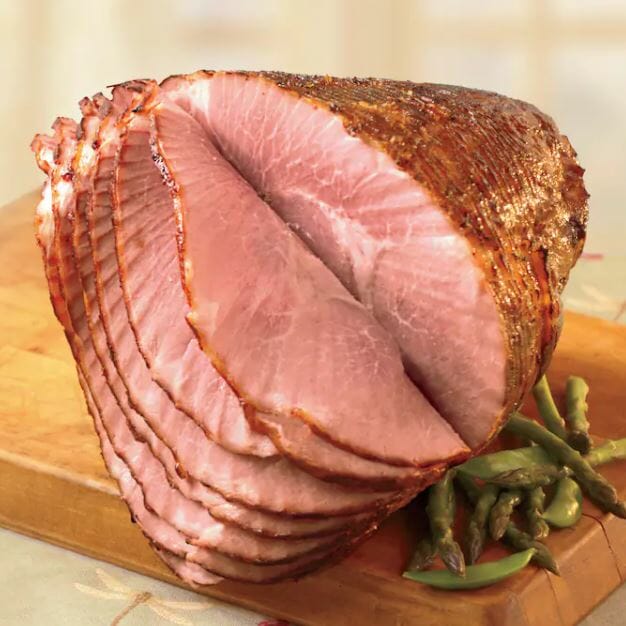
How to Bake a Ham
Many hams are only partially cooked, to an internal temperature of about 137 degrees F, to kill any bacteria. A fully cooked ham is brought to an internal temperature of 148 degrees for greater tenderness and convenience.
Hams are best baked slowly, not roasted at high heat. A moderate oven (350 degrees) will work just fine.
To keep your ham moist and juicy, place it cut-side down in a baking or roasting pan. If it will be in the oven longer than an hour, tent it with foil to keep it from drying out.
A partially cooked ham will need about 20 minutes per pound; a fully cooked ham will only need 10 minutes per pound to be heated all the way through…but use a meat thermometer to guide you. Stick the thermometer in the thickest portion of the meat, without touching the bone. Even though ham is considered fully cooked at 148 degrees, you’ll want to cook it to an internal temperature of 160 degrees for maximum tenderness.
Be sure to let the ham rest for 10-15 minutes after removing it from the oven; the internal temperature will continue to rise a few degrees, and the juices will reabsorb into the meat. Now it’s time to carve the ham.
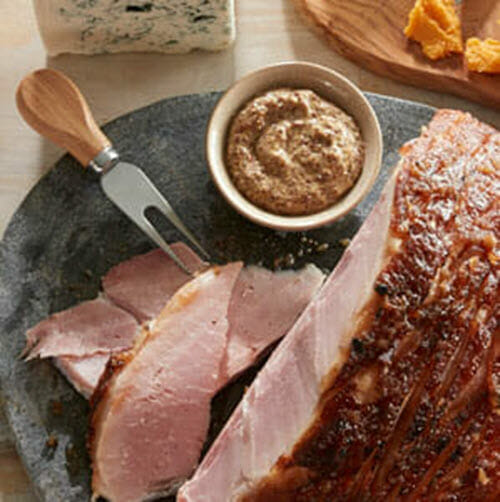
How to Carve a Ham
- Lay the ham horizontally on a platter. Take a slice or two off the bottom to create a flat, steady base, and then continue.
- Starting at the narrower end, make vertical cuts perpendicular to the bone. Slice only what you need for dinner; the rest will stay moister if left on the bone.
- Cut along the bone to remove the slices.
- Wrap the bone and any remaining meat and store in the fridge. You may slice the leftover ham for sandwiches and make soup. Freeze if keeping more than 5 days.
As mentioned earlier, these instructions are for a bone-in ham. If you choose a spiral-sliced or boneless ham, your work becomes much easier.
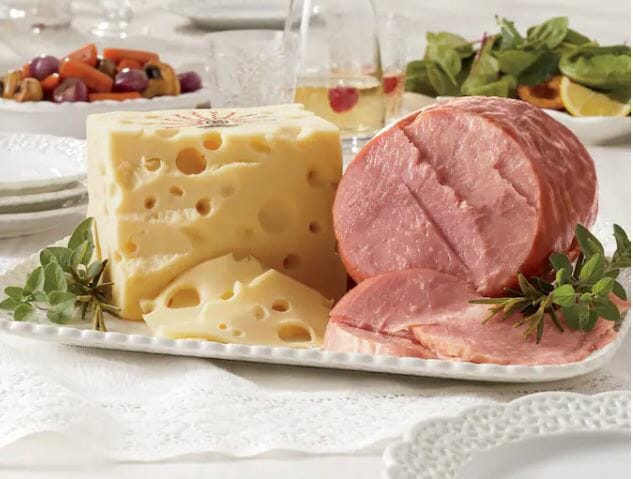
What to Serve with Easter Ham
The side dishes you choose should reflect the spring season. Roasted baby spring vegetables or the season’s fresh asparagus would be a perfect choice. For many folks, the easy choice is the classic green bean casserole, but some may prefer a slightly more upscale risotto—especially one that includes a vegetable. And if you really want to spend more time on the Easter egg hunt and less on cooking, you can find expertly prepared casseroles and other sides online that ship right to your door in time for Easter.
After the main course and side, consider the European tradition of a cheese course. Of course, nothing goes better with ham than Swiss cheese…but it’s always nice to offer a variety by way of a pair or trio of cheeses. Cheddar is particularly good with ham, too…and the pair will go beautifully with the red and white wines you’re pouring. For dessert, choose a classic red velvet cake or a festive torte with spring colors. That will put the perfect ending on an Easter table dinner celebrating the season of new beginnings.
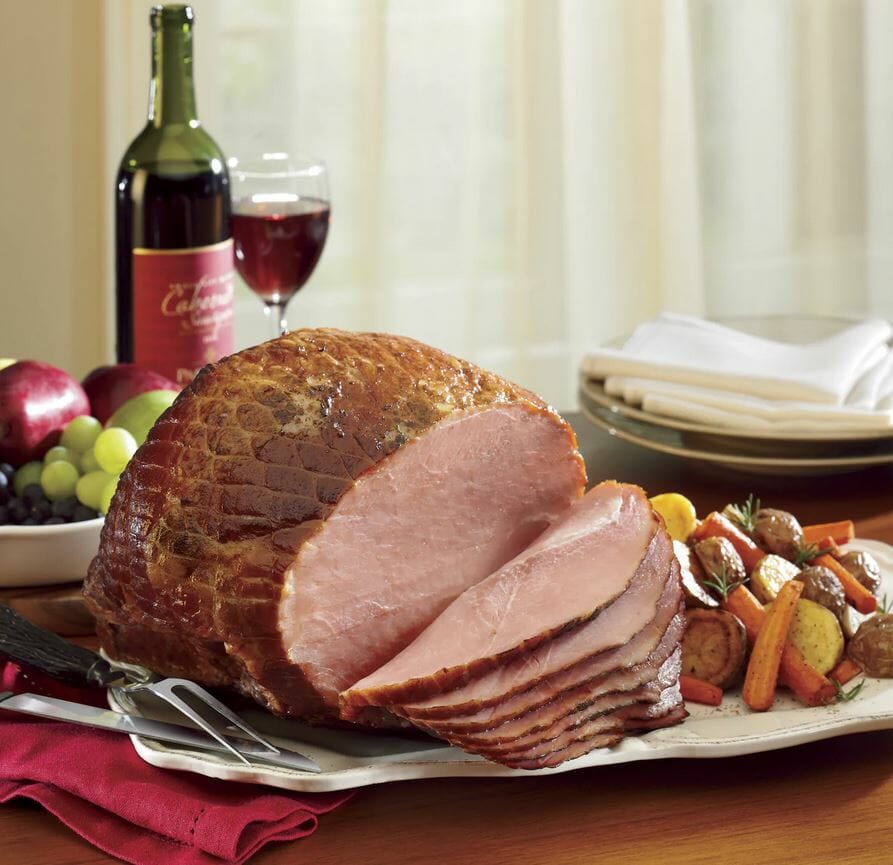
Pairing Wine with Ham
Ham is wonderfully receptive to a variety of wines. You would typically not serve a white wine with beef or a red wine with fish…but since ham is pork, it fits nicely into that category of meats that go equally well with white OR red wine.
If you prefer red wine, a California pinot noir has the lush cherry fruit notes that go exceptionally well with the honey or brown sugar glaze, and the acidity to cut through the fat. Other reds, like merlot or shiraz, would also work nicely as long as they are long on fruit and short on tannins. The good news here is that new-world versions of these wines (merlot from California or Chile, shiraz from Australia) more closely capture these characteristics than their more-complex French counterparts, and are more affordable.
For white wines, try an Alsatian pinot gris or an off-dry German riesling, the acidity of which is balanced with enough residual sugars to complement the sweet glaze of the ham. Remember, a key element of pairing wine with food is geography. Honey-glazed ham is a northern European tradition, so a pinot gris from Alsace will tend to pair better with it than an Italian pinot grigio: the same grape grown in a different region and with completely different characteristics.




Comments (1)
Patricia J Spangler
I always enjoy all of you delicious candies only mostly the hams. I love their taste, moistness. They are delicious